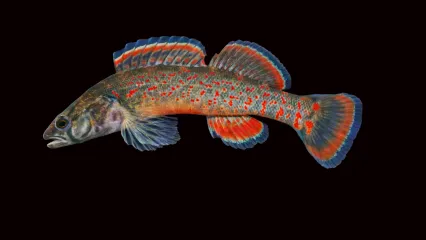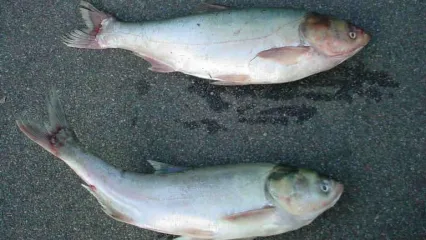
Description
The redfin darter (Etheostoma whipplei) is a small fish native to the south-central United States. It’s found in southwest Missouri, northern Arkansas, southeast Kansas, and eastern Oklahoma. They are classified as members of the perch family, or Percidae, and also as a nongame animal. Nongame means the redfin darter is not fished for food or sport and is not listed as threatened or endangered in Oklahoma.
The redfin darter is very sensitive to pollution levels. They thrive in highly oxygenated water, so if carbon dioxide levels rise to critical levels, they begin to perish. This darter is not listed as endangered in Oklahoma but is listed as endangered in Missouri. Some of the reasons for the redfin darter’s decline include the construction of dams that restrict their habitats, improper sand or gravel removal, pesticide runoff from agricultural areas, and livestock waste.
This fish has been called the hummingbird of the fish world because of the vibrant reds and blues seen on males during the breeding season. During the breeding season, males are characterized by light-brown scales covered in red and blue spots spanning their entire body. Their dorsal fins are colored with a bright orange-red stripe in the center, along with a blue stripe bordering the outer edge of the fin. The tail fin is similar to the dorsal fin but has orange spots at its base. The females and juveniles are not as colorful. They are a grayish color with yellow spots on their sides and a duller red and blue stripe on their dorsal fin and tail fin.
Size
An adult redfin darter can range from 1.75 to 3 inches long.
Habitat
The darter family of small fish gets its name from the way these fish dart around rocks and other obstacles in their habitats. They tend to stay in rocky pools or headwaters of creeks and small rivers. It is common to see them in the current-swept vegetation within each of these habitats.
The largest populations of redfin darters have been observed in small, clear, rocky streams. They spawn in mid-March to mid-April, and the females are capable of producing 30 to 200 eggs every spring.
Life Cycle
While little is known about the life history of the redfin darter, researchers speculate they eat aquatic insects similar to other fishes.
How To Observe
This unique fish is one to look for when you find yourself on a stream in eastern Oklahoma. Their exciting colors make them stand out against their rocky habitats, and their quick, darting movements make them seem like a blur of color. Just make sure to look for them in spring if you want to experience the diverse colors of this darter.



